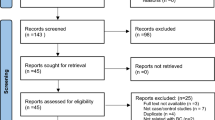Abstract
Single nucleotide polymorphism (SNP) rs710521[A], located near TP63 on chromosome 3q28, was identified to be significantly associated with increased bladder cancer risk. To investigate the association of rs710521[A] and bladder cancer by new data and by meta-analysis including all published data, rs710521 was studied in 1,425 bladder cancer cases and 1,740 controls that had not been included in previous studies. Blood samples were collected from 1995 to 2010 in Germany (n = 948/1,258), Hungary (n = 262/65), Venezuela (n = 112/190) and Pakistan (n = 103/227) supplemented by a meta-analysis of 5,695 cases and 40,187 controls. Detection of a A/G substitution (rs710521) on chromosome 3q28, position 191128627 was done via fast real-time polymerase chain reaction (rt–PCR). Rs710521[A] is associated with increased risk in the unadjusted analysis (OR = 1.21; 95% Cl = 1.04–1.40; P = 0.011) and in the recessive model adjusted for age, gender, smoking habits and ethnicity (OR = 1.23; 95% Cl = 1.05–1.44; P = 0.010). No difference between individuals occupationally exposed versus not occupationally exposed to urinary bladder carcinogens was observed concerning the relevance of rs710521[A]. Similarly, rs710521[A] did not confer different susceptibility in smokers and non-smokers. Performing a meta-analysis of 5,695 cases and 40,187 controls including all published studies on rs710521, a convincing association with bladder cancer risk was obtained (OR = 1.18; 95% Cl = 1.12–1.25; P < 0.0001). However, the odds ratio is relatively small.



Similar content being viewed by others
References
Barrett JC, Fry B, Maller J, Daly MJ (2005) Haploview: analysis and visualization of LD and haplotype maps. Bioinformatics 21:263–265
Cauberg EC, de Bruin DM, Faber DJ, van Leeuwen TG, de la Rosette JJ, de Reijke TM (2009) A new generation of optical diagnostics for bladder cancer: technology, diagnostic accuracy, and future applications. Eur Urol 56:287–296
Dupont WD, Plummer WD (1990) Power and sample size calculations: a review and computer program. Control Clin Trials 11:116–128
Dupont WD, Plummer WD (1998) Power and sample size calculations for studies involving linear regression. Control Clin Trials 19:589–601
Feil G, Maurer S, Nagele U, Krug J, Bock C, Sievert KD, Stenzl A (2008) Immunoreactivity of p63 in monolayered and in vitro stratified human urothelial cell cultures compared with native urothelial tissue. Eur Urol 53:1066–1072
Golka K, Hermes M, Selinski S et al (2009) Susceptibility to urinary bladder cancer: relevance of rs9642880[T], GSTM1 0/0 and occupational exposure. Pharmacogenet Genomics 19:903–906
Hengstler JG, Arand M, Herrero ME, Oesch F (1998) Polymorphisms of N-acetyltransferases, glutathione S-transferases, microsomal epoxide hydrolase and sulfotransferases: influence on cancer susceptibility. Recent Results Cancer Res 154:47–85
Kempkes M, Golka K, Reich S, Reckwitz T, Bolt HM (1996) Glutathione S-transferase GSTM1 and GSTT1 null genotypes as potential risk factors for urothelial cancer of the bladder. Arch Toxicol 71:123–126
Kiemeney LA, Thorlacius S, Sulem P et al (2008) Sequence variant on 8q24 confers susceptibility to urinary bladder cancer. Nat Genet 40:1307–1312
Kiemeney LA, Sulem P, Besenbacher S et al (2010) A sequence variant at 4p16.3 confers susceptibility to urinary bladder cancer. Nat Genet 42:415–419
Koga F, Kawakami S, Fujii Y et al (2003) Impaired p63 expression associates with poor prognosis and uroplakin III expression in invasive urothelial carcinoma of the bladder. Clin Cancer Res 9:5501–5507
Lewis CM (2002) Genetic association studies: design, analysis and interpretation. Briefings Bioinform 3:146–153
Lotan Y, Svatek RS, Sagalowsky AI (2006) Should we screen for bladder cancer in a high-risk population? A cost per life-year saved analysis. Cancer 107:982–990
Messing EM (2007) Re: should we screen for bladder cancer in a high-risk population? A cost per life-year saved analysis. Eur Urol 51:1140
Parkin DM (2008) The global burden of urinary bladder cancer. Scand J Urol Nephrol Suppl 12–20
Rafnar T, Sulem P, Stacey SN et al (2009) Sequence variants at the TERT-CLPTM1L locus associate with many cancer types. Nat Genet 41:221–227
Rothman N, Garcia-Closas M, Chatterjee N et al (2010) A multi-stage genome-wide association study of bladder cancer identifies multiple susceptibility loci. Nat Genet 42:978–984
Saravana Devi S, Vinayagamoorthy N, Agrawal M et al (2008) Distribution of detoxifying genes polymorphism in Maharastrian population of central India. Chemosphere 70:1835–1839
Urist MJ, Di Como CJ, Lu ML et al (2009) Loss of p63 expression is associated with tumor progression in bladder cancer. Am J Pathol 161:1199–1206
Wang M, Wang M, Zhang W, Yuan L, Fu G, Wei Q, Zhang Z (2009) Common genetic variants on 8q24 contribute to susceptibility to bladder cancer in a Chinese population. Carcinogenesis 30:991–996
Wu X, Ye Y, Kiemeney LA, Sulem P et al (2009) Genetic variation in the prostate stem cell antigen gene PSCA confers susceptibility to urinary bladder cancer. Nat Genet 41:991–995 Erratum: Nat Genet 41:1156
Acknowledgments
The authors thank Ms. Doris Dannappel, Ms. Marion Page, Ms. Kirsten Liesenhoff-Henze, Ms. Claudia Schulte-Dahmann and Peer-Niklas Pawel for excellent technical support.
Author information
Authors and Affiliations
Corresponding author
Additional information
The first two authors shared first authorship, and the last two authors shared senior authorship.
Electronic supplementary material
Below is the link to the electronic supplementary material.
Rights and permissions
About this article
Cite this article
Lehmann, ML., Selinski, S., Blaszkewicz, M. et al. Rs710521[A] on chromosome 3q28 close to TP63 is associated with increased urinary bladder cancer risk. Arch Toxicol 84, 967–978 (2010). https://doi.org/10.1007/s00204-010-0617-6
Received:
Accepted:
Published:
Issue Date:
DOI: https://doi.org/10.1007/s00204-010-0617-6




